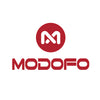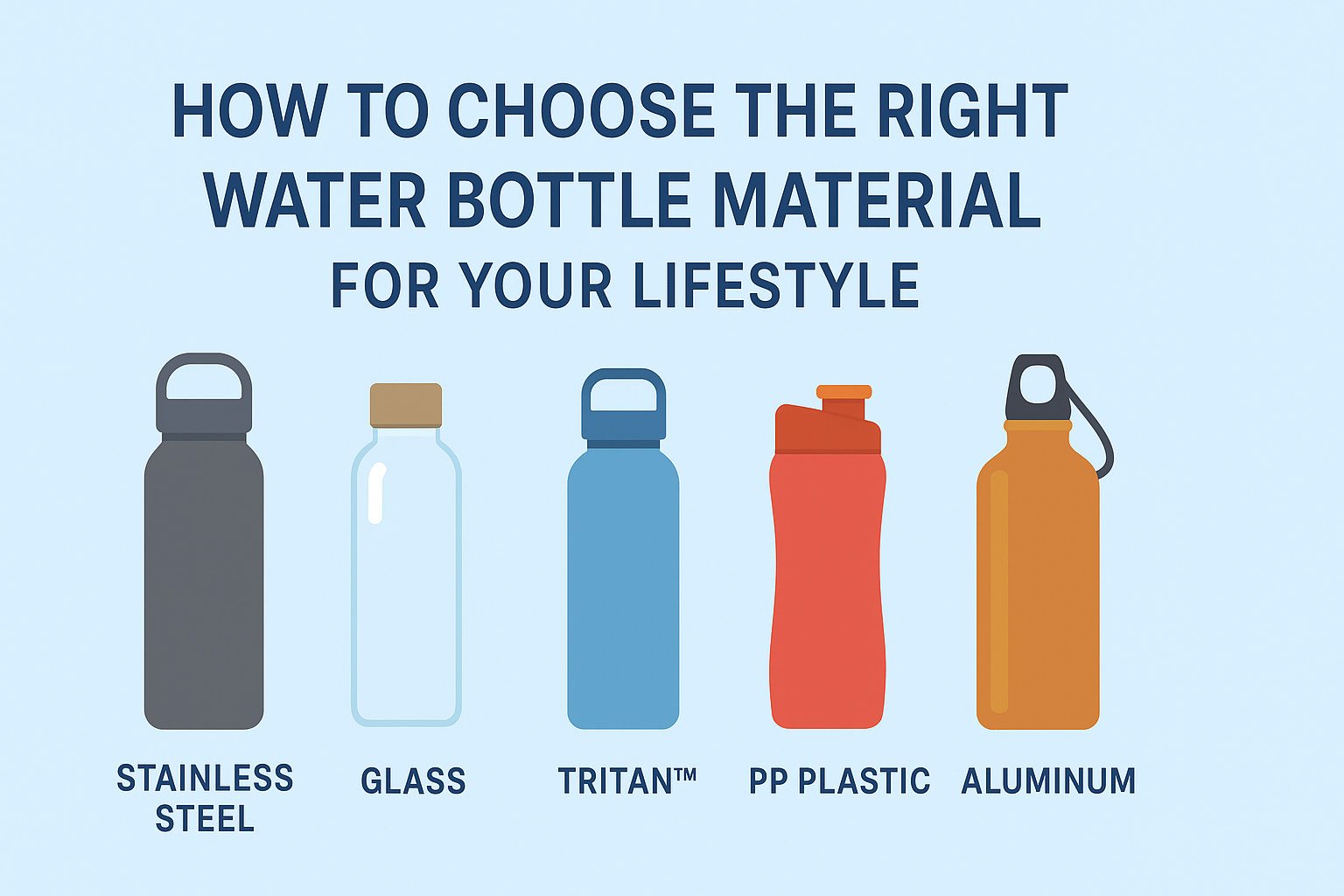A Complete Guide to Understanding Popular Bottle Materials and Making the Smart Choice
In today’s world of health awareness and sustainability, a good water bottle is more than just a container—it’s a daily companion and a reflection of your lifestyle. With so many materials on the market—from stainless steel to glass, Tritan™, PP plastic, and aluminum—each type offers unique advantages and trade-offs. Understanding these differences helps you make a better long-term choice.
This guide explores the most common water bottle materials, their pros and cons, and how to select the one that best fits your needs.
1. Stainless Steel
Keywords: durable, long-lasting, insulated, safe
Stainless steel bottles have become the go-to choice for premium and long-term use. The most popular grades are 304 and 316 stainless steel—both known for corrosion resistance, safety, and thermal efficiency.
Pros:
- Excellent insulation—keeps drinks hot or cold for up to 12 hours.
- Durable and impact-resistant; no strange odors or aftertaste.
- Hygienic and easy to clean.
Cons:
- Slightly heavier than plastic bottles.
- Poorly manufactured cups may leave a metallic taste.
Best for: Office workers, outdoor users, coffee lovers.
Brand trend: Innovative brands like MODOFO combine double-wall vacuum insulation with powder-coated finishes to balance performance, aesthetics, and durability.
2. Glass
Keywords: pure, chemical-free, easy to clean
Glass bottles represent the cleanest and most neutral way to drink water. They don’t react with beverages, and they’re free from harmful chemicals like BPA or phthalates.
Pros:
- 100% free of toxins, odors, and flavors.
- Ideal for tea, fruit infusions, and home use.
- Easy to clean and visually appealing.
Cons:
- Fragile and unsuitable for sports or travel.
- Poor insulation performance.
Best for: Home users, office settings, tea drinkers.
Market note: High borosilicate glass has become a modern upgrade—offering greater resistance to temperature shock and cracking.
3. Tritan™ (Eastman Copolyester)
Keywords: BPA-free, lightweight, child-safe, durable
Tritan™ is a next-generation BPA-free copolyester developed by Eastman. It’s now used by leading brands like Nalgene and MODOFO for its safety, clarity, and toughness.
Pros:
- FDA and EU-approved food-grade safety.
- Lightweight, shatter-resistant, and 100% BPA-free.
- Withstands heat up to around 100°C.
Cons:
- Not as heat-resistant as stainless steel.
- Can scratch over time with frequent use.
Best for: Fitness lovers, commuters, kids, and travel users.
Design trend: The industry is moving toward Tritan–stainless steel hybrid designs, combining lightweight convenience with better thermal insulation—ideal for modern consumers seeking both function and style.
4. PP Plastic (Polypropylene)
Keywords: affordable, lightweight, everyday use
PP bottles are widely used for basic, budget-friendly water bottles. They are lightweight and resistant to many chemicals, making them common for short-term use.
Pros:
- Cost-effective and easy to carry.
- Resistant to most mild acids and bases.
Cons:
- Limited heat resistance; can degrade over time.
- Not ideal for long-term or high-temperature use.
Best for: Short-term, promotional, or backup use.
Note: Always check for food-grade certification before purchasing a PP bottle.
5. Aluminum
Keywords: ultra-light, portable, outdoor use
Aluminum bottles are still favored by outdoor adventurers due to their extreme lightness and durability. However, they require internal coatings to prevent corrosion.
Pros:
- Very lightweight and easy to carry.
- Excellent for cold beverages.
Cons:
- Prone to corrosion if the liner wears off.
- Safety depends on the quality of the internal coating.
Best for: Hiking, camping, cycling.
Industry trend: Anodized aluminum is gaining popularity for better resistance and safety, though it remains a niche option compared to stainless steel and Tritan™.
How to Choose the Best Water Bottle for You
Choosing the right bottle starts with understanding your usage scenario and health priorities:
- For thermal performance: Go for a stainless steel insulated bottle.
- For pure taste and clarity: Choose a glass bottle.
- For lightness and daily mobility: Tritan™ is your best balance of safety and convenience.
- For short-term or low-cost use: PP plastic works fine.
- For outdoor and weight-sensitive activities: Aluminum remains a valid option.
Beyond Material: What Else Matters
Material is just one part of the story. A truly good water bottle considers multiple design details:
- Lid design and seal quality: A well-engineered silicone ring prevents leaks and contamination.
- Straw or spout design: Impacts convenience, especially during workouts or driving.
- Ergonomics and grip: Determines long-term comfort and usability.
- Capacity: Around 32oz (950ml) is now the most popular size for all-day hydration.
Brands like MODOFO focus on human-centered design, balancing material innovation with everyday practicality—helping users stay hydrated with comfort and style.
Final Thoughts: Your Bottle, Your Lifestyle
A water bottle isn’t just a product—it’s a statement of how you live.
Every material tells a story: the efficiency of stainless steel, the purity of glass, the versatility of Tritan™.
Choosing the right one means understanding your rhythm, your habits, and your priorities. Because the best water bottle isn’t just the most durable—it’s the one that fits you.





